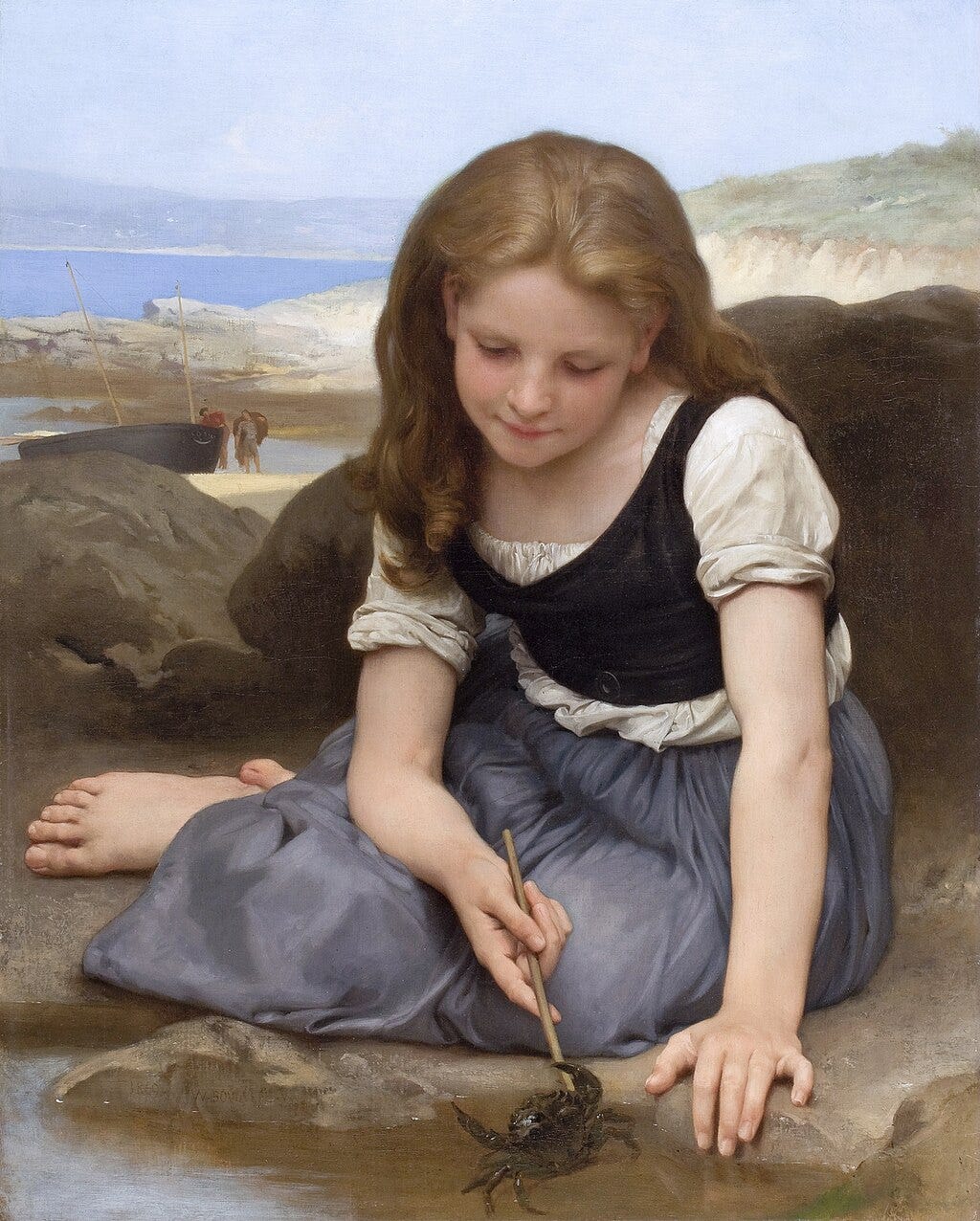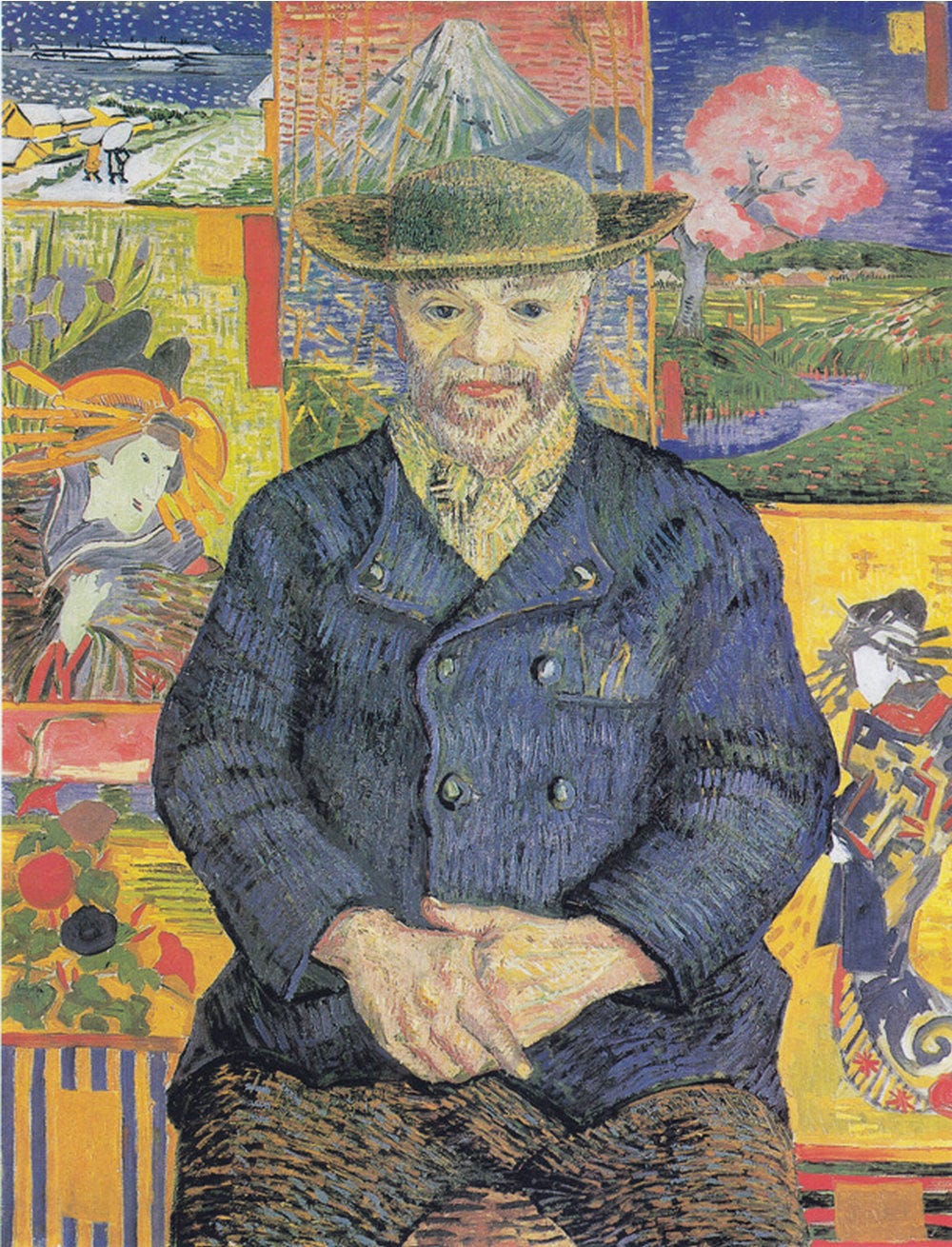So many of our “hot topics” today are just microwaved leftovers of debates from the recent past that we’ve forgotten. The painting above is by Bougeureau from the mid 19th century. He was one of the best of the so-called “academic painters”despite his name being impossible to spell. And while you might dismiss this as sentimental, if you saw this painting in person, you’d probably be impressed. The oil paint is practically edible. It’s boring but good enough. By the mid-19th century, old-timey craftsmanship and industrial education had mastered a certain style and was cranking out students by the dozens. And they were popular… for a while.
Here’s Van Gogh a few decades later. What happened?
Most people will tell you photography came along and made academic painting redundant. But if you check the timelines, this isn’t the case. Put a Bougeureau next to a daguerretoype and you’ll see what I mean. No one thought one would replace the other.
Why these dramatic changes? Because Europeans saw art from other cultures and they realized to their horror and delight that they were missing something. In Van Gogh’s case, Japanese culture was this catalyst (see painting above where he includes the Japanese art).
Here’s Gauguin two years later, who preferred Tahiti. Each of these folks had their own “other”. We see these paintings now and think of them as monuments of self-expression, and they are, but they were also just copying the same way that Bill Monroe or Eminem was copying. That copying wasn’t just mechanical and can’t be dismissed as “cheating.” Cheating is a useful word though. These were love affairs. They reflected an authentic exploration of Something Else.
At this point, the current discourse introduces itself and promptly confronts us with moral objections, which I’ll sum up:
(1) Stop thief! How dare you!
(2) Oh well, everyone steals, just gotta make sure you pay back with interest.
And this is essentially where AI debates are today. Interestingly, these debates are all tightly framed by our ideas of property, and art has never made sense within these categories. (see Lewis Hyde, The Gift) and never will.
But I’d rather go back to that first insight felt so deeply in the 19th century- we are missing something. It lead to a century of art that was “bad” but also brilliant. Flawed but inspired. (I elaborate later.)
So when I see people say, “Wow look at AI art, isn’t it good?” I wonder where they’ve been for 200 years.
There’s no easy answer. Or rather, there’s a ton of easy answers. People are spastically and impulsively lurching towards them all over the place, whether they be NFTs or fundamentalism or psychedelics or gym memberships. Something Else is bigger than its ever been. But, knowing a little history can be helpful to see that these answers are not really answers. How do I know? Because if you poke them just a little bit, you’ll find that pain is still there behind a very thin veil.
The land of Something Else is a place beyond gadgets. Beyond engineering. It’s hard to even say anything about it, or focus on it for very long. How to get there? Probably helps to do it in groups. You’ll need to learn techniques, glean what you can from history, have the patience to endure error after error, and most of all, a lot of courage. Intelligence will be the least of it. What to call this practice? I wish there was another word, but the answer is still… art.






